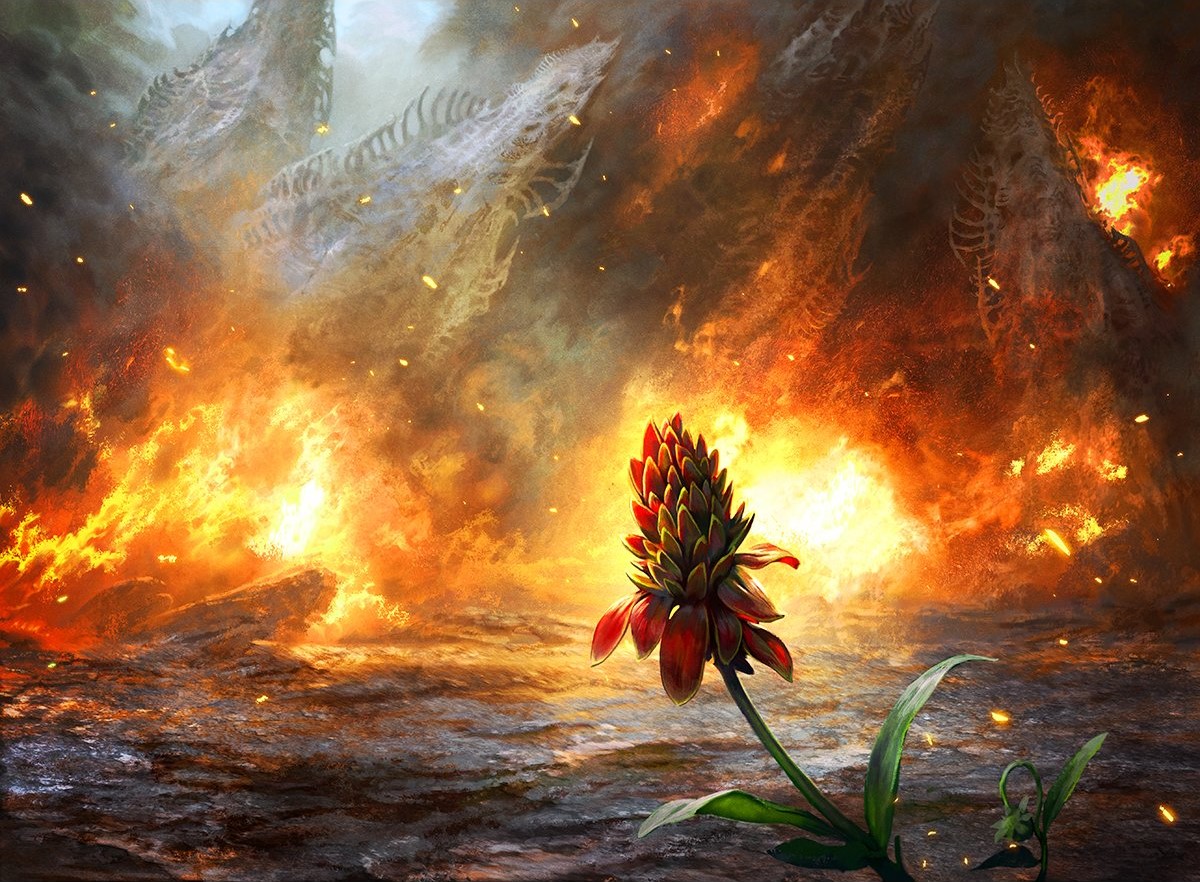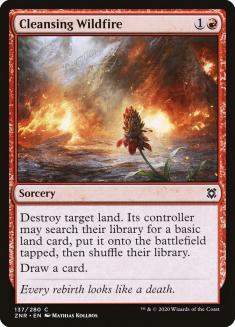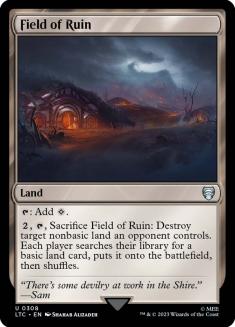Urza’s Mine, Urza’s Tower, Urza’s Power Plant.
These three cards have helped define Modern for the better part of the last decade. I can still remember when Tron first exploded on the scene, when Charles Gindy won a PTQ on Magic Online with the absolute first version of the archetype that has never fully died.
Creatures (2)
Planeswalkers (4)
Lands (18)
Spells (36)
- 4 Mindslaver
- 4 Talisman of Impulse
- 4 Sylvan Scrying
- 4 Chromatic Sphere
- 4 Chromatic Star
- 4 Expedition Map
- 3 Explore
- 1 All Is Dust
- 4 Ancient Stirrings
- 4 Prophetic Prism
Sideboard

Ever since that fateful day, control and midrange decks in Modern have had to contend with the specter of fast mana, high consistency, massively powerful spells, and an unbeatable end-game that started as early as the third turn. Tron’s presence in the Modern ecosystem has influenced everything from Jeskai Control (which could boast at most a 40% matchup against it) to Infect (which was so great in part because it won 70% or more of the time against Tron). A great number of players (myself included) hated playing against Tron, as the sheer power level of the deck and the difficulty of interacting properly with it while not tanking other matchups meant you could rarely beat it with fair decks.
Even with a sideboard full of hate cards, half the time it didn’t even matter and Tron would simply do something broken anyway. Fulminator Mage, for example, is a nice card as a recurring land destruction spell. Jund, Grixis, and Mardu midrange decks have used it numerous times to good effect against Tron in the past. However, just one or two Fulminator Mages don’t really win the game, as Tron is only an Expedition Map or a Sylvan Scrying away from getting right back in it. Sadly, oftentimes it doesn’t move the needle in the matchup enough to be worth the deckbuilding cost to include it. That’s the perpetual issue with the common Tron hate cards. And it’s for that reason that Tron has continued to be a part of Modern. It’s consistent and hard to hate out without multiple pieces of disruption.
There have been many times where folks have proclaimed the death of Tron, only to be proven incorrect because none of the hate cards were the correct mix of powerful with a low opportunity cost. Cards like Alpine Moon, Blood Moon, Unmoored Ego, Assassin’s Trophy, Damping Sphere, and the like don’t quite do what they need to at the rate that would really turn the tables on the Tron matchup. With Alpine Moon, Tron is only a Blast Zone away from turning all their lands back on and winning easily. With Blood Moon, it’s just an Oblivion Stone or possibly a Nature’s Claim that they need. With Unmoored Ego, on the play you might be able to knock out your opponent’s mana advantage, at which point you still have to close out the game before Thragtusks and Wurmcoil Engines come down in the middle turns and win anyway. If you’re on the draw, your opponent might just cast a Karn Liberated or Wurmcoil Engine before you get a chance to even attempt to Unmoored Ego them, and you’re just sitting there with your hate card in your hand, mocking you. With Assassin’s Trophy, you’re often only setting back the opponent a turn, if that.
Part of the issue with all of these cards is that they’re narrow, and thus are relegated to the sideboard. The alternative is that they’re simply too bad and don’t actually do enough to stop the Tron deck from doing its thing in the case of a card like Assassin’s Trophy. If a sideboard card only comes in against one matchup, and doesn’t even increase your win percentage by more than a few points, is it even worth calling it a Modern-power-level hate card? I think not. But the way forward for reasonable anti-Tron interaction isn’t in high narrow power; it’s in cross-matchup application. Cards that are worth including in a normal deck need to not be dead against Tron. That’s where Cleansing Wildfire comes in.
Amulet of Vigor. Primeval Titan. Simic Growth Chamber.
These three cards – along with their supporting cast of cards that allow additional land drops such as Explore, Sakura-Tribe Scout, Dryad of the Ilysian Grove, and the long-banned Summer Bloom – have taken a leading role in Modern as the other big-mana deck of choice, supplementing or even supplanting Tron as the best way to cast expensive spells ahead of schedule depending on which recently-printed cards buff or nerf the two archetypes and/or their predators. Ever since Justin Cohen made it to the finals of Pro Tour Fate Reforged with Amulet Bloom, this secondary big-mana archetype has been a part of Modern, albeit generally at a lower level than Tron for much of their time together.
Creatures (7)
Lands (27)
Spells (26)

This deck has, at various points, been significantly more explosive than Tron, and is essentially immune to cards like Alpine Moon, Spreading Seas, or Assassin’s Trophy, though one card was its Achilles’ heel. Amulet of Vigor decks, compared to Tron, always suffered from a higher vulnerability to Blood Moon. That is, except for the fact that they can play out their bouncelands without any need to return another land to their hand, and then cast a Summoner’s Pact at their leisure for a Reclamation Sage and win that very same turn. A three-mana card that sort of, kind of hinders Amulet Titan until they draw one of their free tutors or their bullet answer? It’s not a battle I’m particularly excited about, to be honest.
More recently, with Dryad of the Ilysian Grove, Amulet Titan has another full four cards that just get around Blood Moon without a problem at all. Just cast your Dryad after the Blood Moon hits the battlefield. All your lands turn into rainbow lands and can easily cast your Primeval Titan or other giant creature.
Additionally, with cards like Field of the Dead and Cavern of Souls to fight back against control decks, it’s nearly impossible for a control deck to fight fair against Amulet Titan with the intent of countering their best cards or casting relevant hate spells. A lot of things have to come together to succeed as a fair deck against Amulet Titan, most important among them a relevant and fast clock. You can’t win the super-long-game, almost no matter what. You have to disrupt while moving forward with your own gameplan. Cheap, low-opportunity-cost cards are the answer here, not lock pieces that you rely on as linchpins to hold the matchup on their own. For some of the most popular current archetypes in Modern, that means cantrips to keep the chain of gas flowing while setting the big mana decks back a turn. That means Cleansing Wildfire.
What recently printed cards have actually put a dent in Tron and Amulet Titan and allowed slow, fair decks to fight back in a relevant manner? There’s no question that linear decks like Infect, Ad Nauseam, Gifts Storm, and Burn have at various points preyed on these slightly slower, non-interactive strategies, but in order for the well-rounded midrange and control decks to win, they usually had to get lucky no matter how many hate cards they brought to the table. However, in recent memory the biggest tool for fair decks to fight back has been Field of Ruin.
Why Field of Ruin? The incredibly low opportunity cost. This is a card that doesn’t require much in deck design to accommodate it, while offering meaningful incidental disruption and even a small amount of mana fixing. It singlehandedly turned the Azorius Control versus Mono-Green Tron matchup from a rout in favor of Tron to a fair fight. Suddenly a Field of Ruin combined with a Stony Silence and a few counterspells allows the control player to get into the driver’s seat. These don’t require dedicated sideboard hate, and even allow for a bit of useful disruption in other matchups.
Field of Ruin works similarly against Amulet Titan. It can undercut the natural mana advantage and card advantage inherent in the Ravnica bouncelands and protect against unfair end-games like Field of the Dead; Cavern of Souls; and Valakut, the Molten Pinnacle.
So why is Cleansing Wildfire similarly useful and game-changing? Cleansing Wildfire offers the same effect as Field of Ruin, with the same general attributes: low opportunity cost, meaningful disruption, and minor synergy. Regrettably, the deck in which Cleansing Wildfire might have been at its absolute best is no longer a part of Modern: Izzet Phoenix. Cleansing Wildfire, as a cheap cantrip that disrupts a bad matchup, would have been absolutely killer out of Izzet’s sideboard. It is an interactive spell that doesn’t detract from the core of the deck. That’s all these synergy-driven decks ever want; disruption that doesn’t eat away at the core of your deck. Obviously if you fill your Izzet Phoenix deck with Blood Moons and the like, you reach a point where you can no longer reliably recur your Arclight Phoenixes on critical turns. Cleansing Wildfire would have flipped the scripts on a tough matchup and made Izzet Phoenix even more dominant.
Fortunately, we have two worthy successors to the Izzet Phoenix mantle, both of which are performing quite well in contemporary Modern. And Cleansing Wildfire fits both like a glove.
Cleansing Wildfire’s synergy, of course, is with the powerful prowess creatures in both Izzet Prowess and Rakdos Prowess. The core of Monastery Swiftspear and Soul-Scar Mage demands cantrips. Whether they’re being supplemented with Sprite Dragon and Stormwing Entity or Abbot of Keral Keep, these cards benefit when you have a high enough density of cheap instants and sorceries to pump them up to three or more power. Suddenly for a minuscule mana investment on the first and second turn, you have creatures on the fourth and fifth turns that are massive while you cast tons of interactive spells. And the best cheap new interactive spell against the big-mana decks to follow up a few aggressive beaters is Cleansing Wildfire.
Creatures (14)
Lands (19)
Spells (27)

In various builds of Izzet Prowess and Rakdos Prowess, I see sideboard slots occupied by Blood Moon and Molten Rain. Blood Moon’s time has come and gone. Molten Rain is the more mature solution, especially in a deck that is trying to pressure the opponent and get them from twenty to zero as quickly as possible. However, Cleansing Wildfire obsoletes both cards, and will allow these decks to comfortably gain ground in matchups without sacrificing their main gameplans. I look forward to getting to play with it in all types of aggressively slanted midrange decks in Modern!




